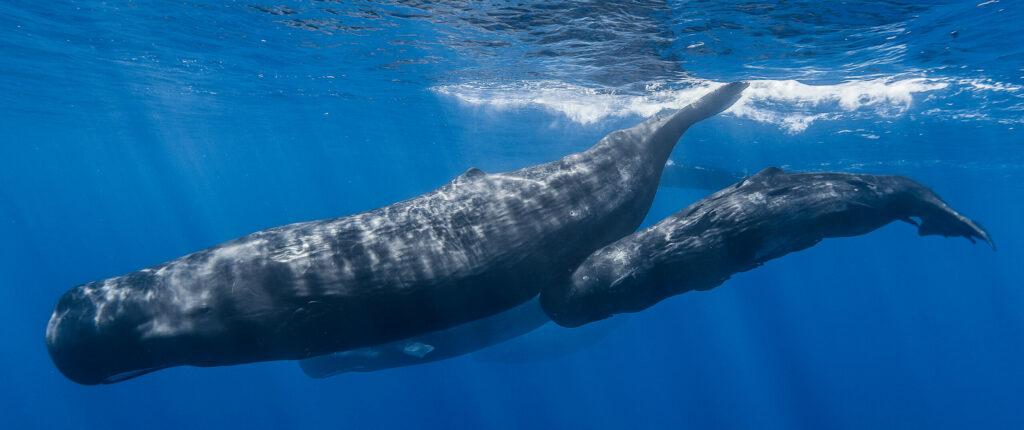Common name:
Sperm whale
Scientific name:
Physeter macrocephalus
Spanish name:
Cachalote
Conservation status:
Vulnerable
Average lifespan:
30 – 70 years
Average size:
12 metres
Maximum size:
20.5 metres
Average weight:
40 tonnes
Maximum weight:
57 tonnes
Overview
The sperm whale is the largest of the odontocetes, or toothed whales. They are sexually dimorphic, which means males and females are visually distinguishable. Males can be almost three times as large weighing at about 45 tonnes, compared to females which weigh on average 15 tonnes. Males reach around 12 metres in length, which is the same as a double-decker bus. A sperm whale’s head is around a third of its body length, so for a large male, this is the same as a hatchback car. It’s no surprise, then, that their scientific species name macrocephalus means ‘big head’.
Inside their giant heads, sperm whales also have the largest brain on Earth. A large part of the head is taken up by oil-saturated fatty tissue called spermaceti, which generates powerful and focused clicking sounds used for echolocation and communication. It also helps adjusts the whale’s buoyancy. Scientists think the powerful clicks could be used to stun prey, a theory known as the ‘biological big bang hypothesis‘. Below the spermaceti inside their heads is what is called the ’junk’, and this is similar to the ’melon’ found in other toothed whales. This redistributes physical stress across the skull and is thought to have evolved to protect the head during ramming. Although male sperm whales do not fight frequently for access to females, aggressive ramming behaviour is a common characteristic in the group of mammals from which whales are derived, the even-toed ungulates.
Sperm whales in Galapagos

How you can help
Please help us conserve the endangered wildlife of Galapagos by donating today.


